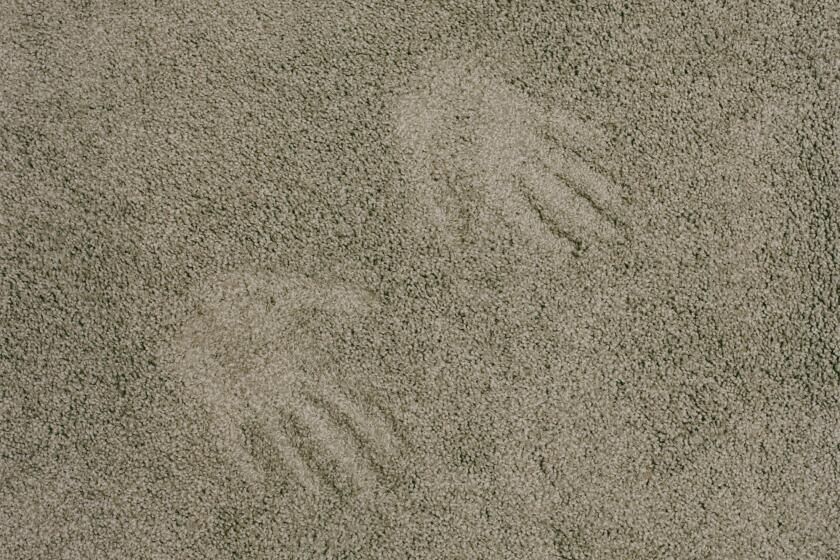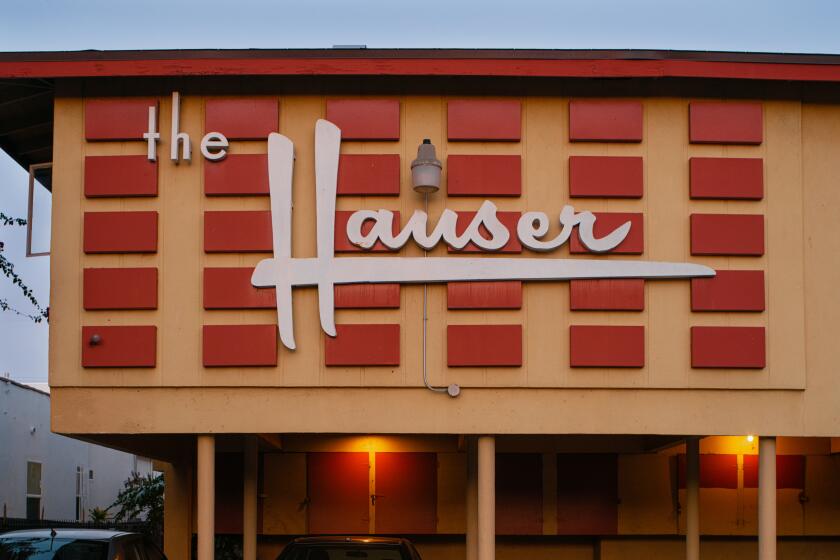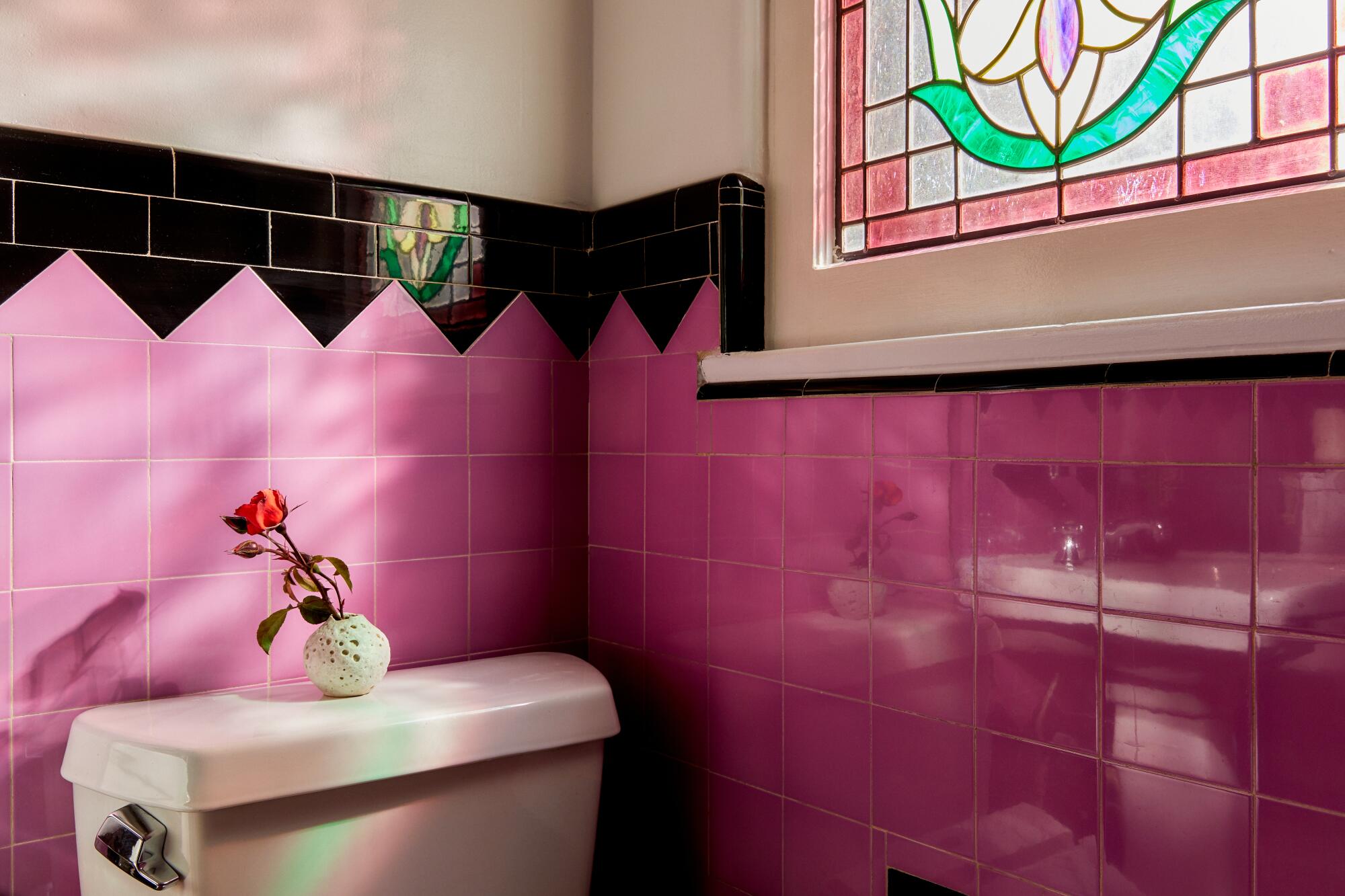
This story is part of Image issue 11, “Renovation,” where we explore the architecture of everyday life — and what it would look like to tear it all down. Read the whole issue here.
An original bathroom is a rare species. An essential place of unmentionables — in a lot of ways, its purpose is clear, unchanged. And yet the bathroom is the second most remodeled room in a house after the kitchen, so it’s always a surprise — and a thrill — to find a historical bathroom untouched.
My sister’s bathroom is one of those midcentury ceramic tile relics, the kind that still exist throughout Los Angeles, hiding inside stucco box apartments and modest bungalows, in Spanish-style villas and Hollywood Regency mansions. This was the first one I had ever seen and didn’t know existed; after a childhood in a tract home in the Valley (818 forever!), a place with this kind of history and character was from another world. With its pale yellow tile and glossy black borders, an old mirrored medicine cabinet with a slot to dispose of razor blades in the back, it seemed to be sui generis, idiosyncratic and somehow perfectly fitting my intense but chill Scorpio sister.
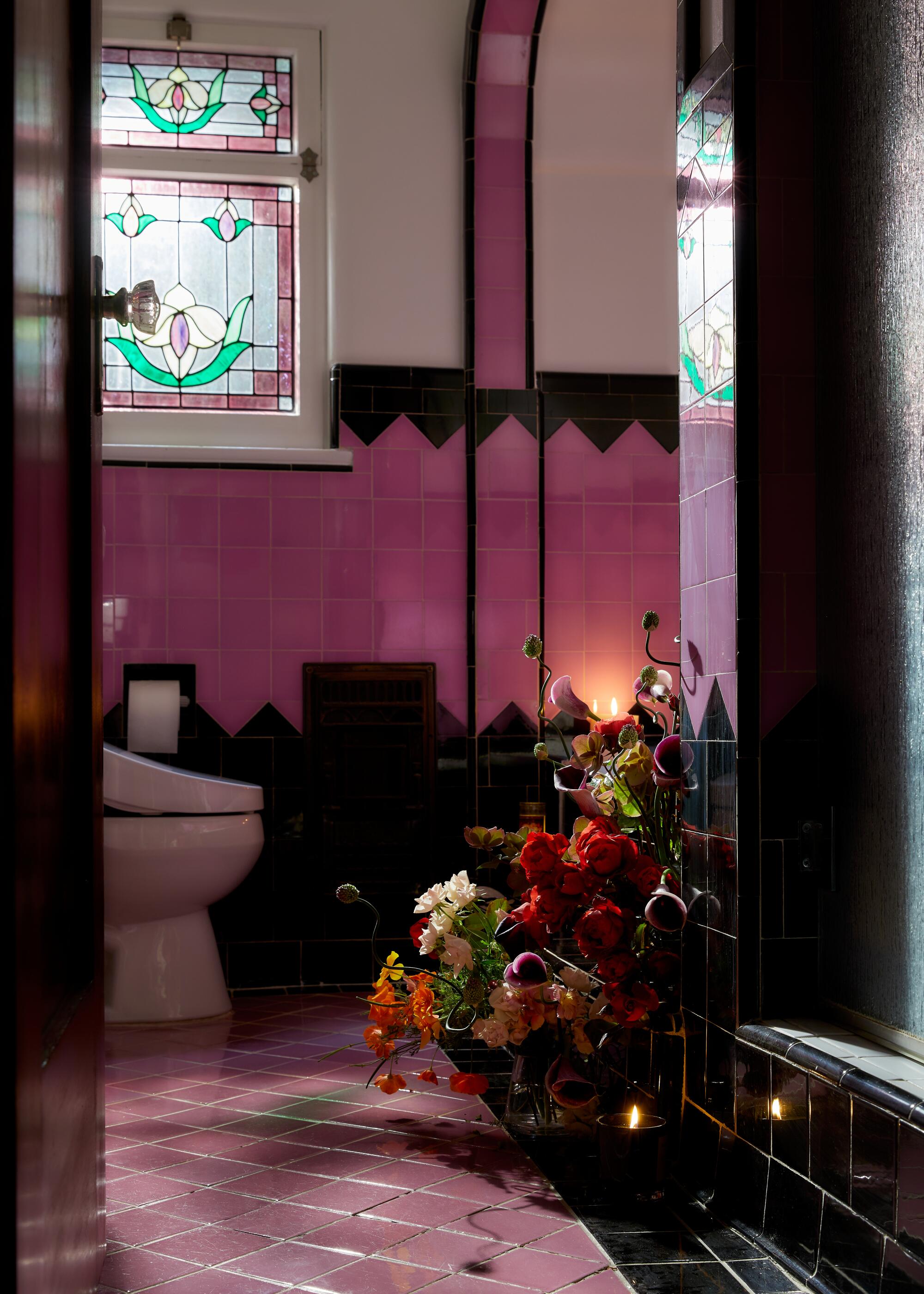
The second time I saw such a bathroom was in what would become my own apartment — this time peach tile with gray borders. The bathroom had the same thin, horizontal tile detail that looks both completely superfluous but very intentional, the same antique built-in wall heater with exposed electrical coils that looks like a safety hazard but works like a charm. Built-in heaters of this variety were first introduced by Thermador in the 1920s. Mine was part of its 1930s “Skyscraper” series, a moment in design when even wall heaters could have Art Deco aspirations.
Eventually, everything tired, clichéd or boring is rediscovered. In L.A., what has come back around is a flooring tradition that’s among the most heinous scourges on the human race
The specific character of these L.A. historical bathrooms comes through in the features — what has been preserved. The bathrooms often come in colors you don’t see anymore — a quirky splash of pink or mint — with a contrasting border and sometimes even a few hand-painted pieces in the mix. There’s usually just a tiled countertop and bathtub area. But in some bathrooms the tile spreads from surface to surface, covering the walls and floor, allowing the bathroom itself to stretch out, a stand-alone shower to separate from the bathtub, each with its own arched, tiled niches. The other fixtures, those necessary accessories — the soap dish, the cup holder, the towel rack, the toilet paper holder — are tile-glazed too. It’s an immersive experience. Standing in one of these bathrooms you realize that you are beholding a Gesamtkunstwerk, a total work of art.
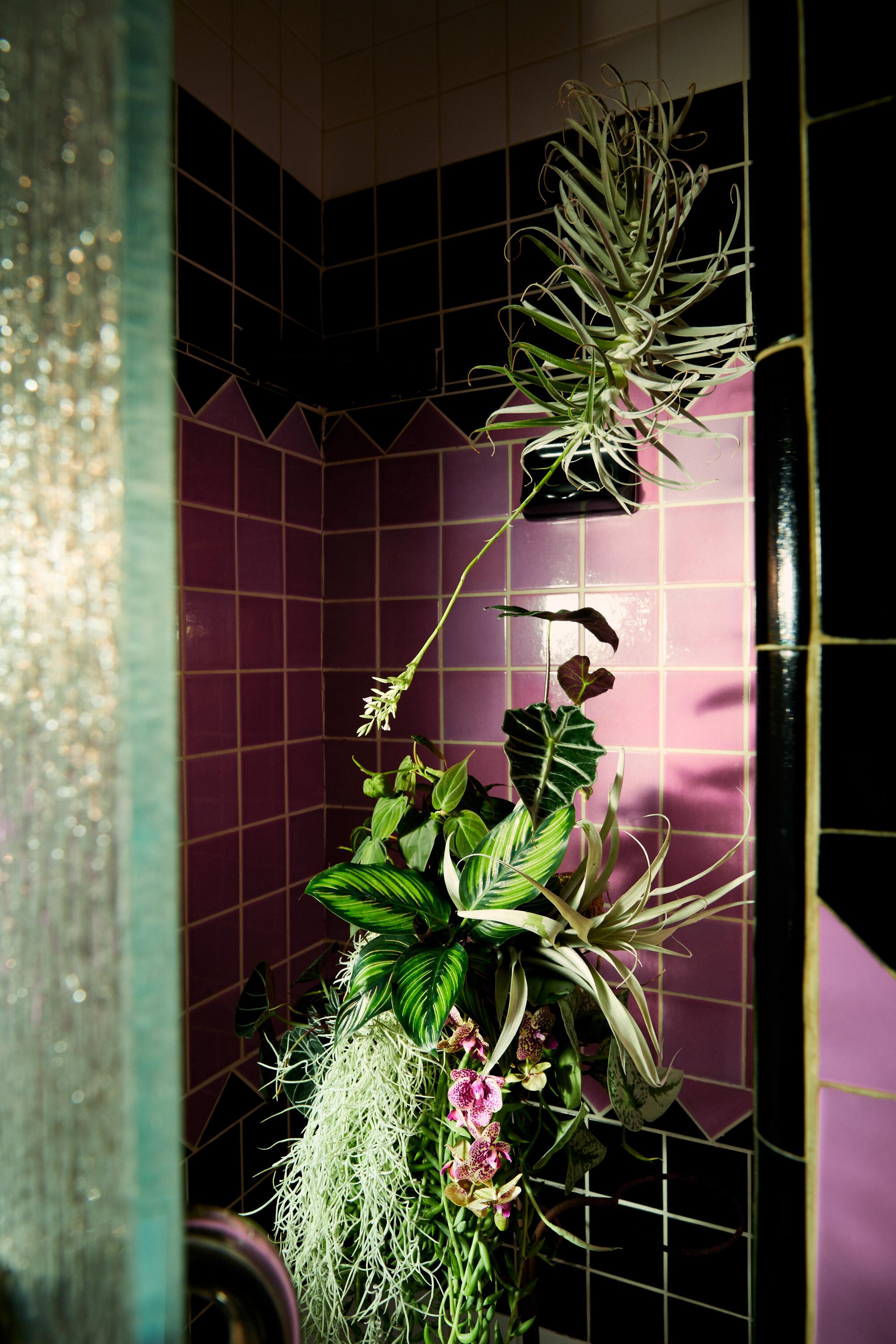
Even if a pink bathroom isn’t to your taste, it’s easy to appreciate something that has integrity, is fitting to its time, is committed to wearing well. Vintage tile bathrooms come with other bygone luxuries: tidy mortar that lasts forever, a tub stopper that actually stops water and the holy grail itself, high water pressure.
In a world where the past exists on an ever-diminishing scale as buildings get put up and knocked down, L.A.’s midcentury bathrooms feel anchored to a particular lineage. In the Victorian era, bathrooms were about sanitation, dominated by white subway tile, all the better to see dirt and eliminate it. The ’20s brought pastel colors, which got saturated and decorated in the ’30s, influenced by the Arts and Crafts movement. The wars returned things to white, this time in an endless 4-by-4 square grid, while also bringing industrialization, standardization and the beginning of cheaper — and less durable — ways of building.
In the ’50s, postwar optimism brought back color for good, with pink and peach being the most popular colors for the bathroom (hat tip to Mamie Eisenhower’s pink bathroom), but this time not only the tile but the sinks and toilets were pink as well — or mint, or baby blue, or sunflower yellow. The ’60s and ’70s kept the color and threw in everything else: pattern on pattern, wallpaper, faux wood paneling, carpet! Then came the heavy stone of a faux Italian villa and ultra-expensive but utterly boring seamless, white surfaces, but also craftsman chic with tactile materials and tasteful colors — tile came roaring back!
The most overlooked letters in the city aren’t on billboards. They are on the sides of the buildings we call home
You can see some of the history thumbing through vintage tile Instagram accounts; these modern archives act like the architectural equivalent of peeking into someone’s medicine cabinet. See @vintagebathroomlove for candy-colored tile porn, historical appreciation and modern retro renovations (the opposite of @ZillowGoneWild); see @vintagetilepreservation for behind-the-scenes stories and if you yourself have vintage tile to save.
For this project, I wanted to pay homage to the vintage L.A. tile bathroom through a work of my own. This piece, “splish splash flowers in the bath” (2022), limns all the aspects of my artistic practice: flowers, architecture, gardens and installations delving into what surrounds us, whether natural or constructed. The work is set in a Spanish-style courtyard house from 1931. This bathroom has original ceramic tile in dramatic purple and black with Art Deco styling and everything on top, arched niches for tub and shower, all the tile accessories. It’s utilitarian but stylish, cramped but utterly luxurious. It’s been designed and built to be lived in, with the inhabitant’s daily habits already imagined and provided for, a sanctuary that anticipates your desires.
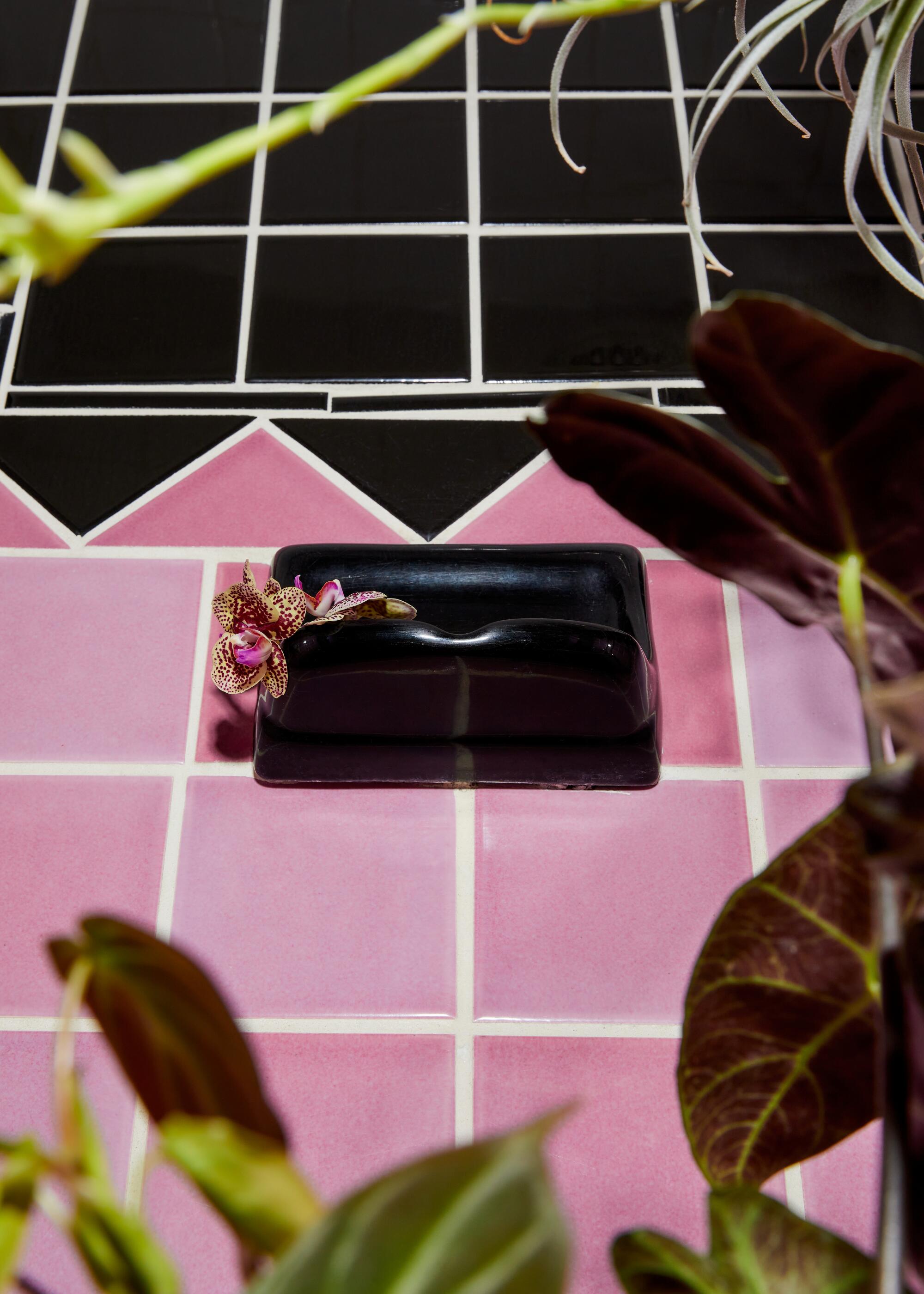
I wanted to respond to the decadent, quirky, golden age of Hollywood glam of it all. I used traditional flowers in untraditional forms — storybook red garden roses, dark trumpet-shaped calla lilies with white edges like grout lines, bright orange poppies calling back ‘Wizard of Oz’ (also from the 1930s, remembered as one of the first mainstream movies in color), dainty lavender lily of the valley but coupled with black rattlesnake grass, foraged nasturtiums and their leaves like miniature lily pads swimming in a milk bath, an evocative glimpse of houseplants taking a shower, like illicitly catching a body in the nude. I wanted to capture the drama, the contrasts, but I also wanted it to feel like someone had just stepped out of the frame, someone lives here.
They say that nothing lasts in L.A. This is the land of perpetual youth and reinvention. But consider this piece a love letter to the past, to show how, sometimes, an old matinee idol can find an adoring new audience because all we want is to be entranced, transported to another time.
Krystal Chang is a writer and a designer of flowers, landscapes, installations and public art in Los Angeles.
